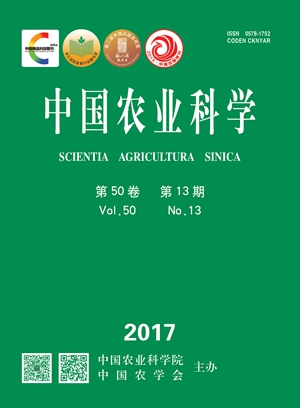-
Effects of Brassinolide on Photosynthesis, Chlorophyll Fluorescence Characteristics and Carbohydrates Metabolism in Leaves of Foxtail Millet (Setaria italica) Under Sigma Broad Stress
- YANG HuiJie, YUAN XiangYang, GUO PingYi, DONG ShuQi, ZHANG LiGuang, WEN YinYuan, SONG XiE, WANG HongFu
-
Scientia Agricultura Sinica. 2017, 50(13):
2508-2518.
doi:10.3864/j.issn.0578-1752.2017.13.010
-
 Abstract
(
441 )
Abstract
(
441 )
 HTML
(
7 )
HTML
(
7 )
 PDF (497KB)
(
648
)
PDF (497KB)
(
648
)
 Save
Save
-
References |
Related Articles |
Metrics
【Objective】 The effects of brassinolide (BR) on photosynthesis, chlorophyll fluorescence characteristics and carbohydrates metabolism of foxtail millet (Setaria italica) under Sigma Broad stress wereexplored to provide some theoretical bases and technological approaches for security application of sulfonylurea herbicide and the alleviation of herbicide phytotoxicity in foxtail millet field. 【Method】Completely randomized design and repeated 3 times, using high-yielding hybrid Zhangza 5 and Jigu 21 with general high quality as materials, through pot experiments, applicating 7.5 mg·L-1 of Sigma Broad at three-leaf to five-leaf stage, and after 1 d foliar spraying water (CK), 0.05, 0.1, 0.2 and 0.4 mg·L-1of BR. the effect of BR on growth parameters (plant height, leaf area, fresh mass), photosynthetic pigment content (Chla, Chlb, Car, Chl (a+b)), gas exchange parameters, chlorophyll fluorescence parameters, sugar content, activities of key enzyme of sucrose metabolism were determined and analyzed to reveal the effects of BR on modulation of photosynthetic capacity and carbohydrates metabolism by Sigma Broad of foxtail millet after 7 d.【Result】 Sigma Broad significantly decreased plant height, leaf area, fresh mass, photosynthetic pigment content, net photosynthetic rate (Pn), transpiration rate (Tr), stomatal conductance (Gs), the maximum photochemical yield (Fv/Fm), apparent photosynthetic electron transport rate (ETR), quantum yield dissipated by non-regulatory energy (Y(NO)), activity of neutral invertase (NI), sucrose synthetase (SS) and sucrose phosphate synthase (SPS), but significantly increased intercellular CO2 concentration (Ci), and the quantum yield dissipated by regulatory energy (Y (NPQ), reducing sugar, sucrose and starch content. One day after Sigma Broad treatment, spraying BR dramatically increased plant height, leaf area, fresh mass, photosynthetic pigment content, Pn, Tr, Gs, Fv/Fm, ETR, Y (NO), NI, SS and SPS of foxtail millet, but decreased Ci, Y (NPQ), reducing sugar, sucrose and starch content. BR at 0.05-0.1 mg·L-1 had a better effect on relieving the Sigma Broad of Zhangza 5, BR at 0.1-0.2 mg·L-1 had a better effect on relieving the Sigma Broad of Jingu 21. BR at ≥0.4 mg·L-1 did not alleviate the phytotoxicity of Sigma Broad.【Conclusion】Results showed that one of the reasons that 7.5 mg·L-1 of Sigma Broad made obvious damage to foxtail millet is that the photosynthetic pigment content was reduced, and photosynthetic pathways and sucrose metabolism were hindered, the PSⅡ photochemical activity was inhibited, and the normal operation of sucrose metabolism was affected. treatment with BR at 0.1 mg·L-1 could alleviate the inhibition of photosynthesis of Sigma Broad in foxtail millet through improving the photosynthetic pigment content, increasing the stomatal conductance, raising PSⅡ photochemical activity, promoting the discharge of carbohydrates and maintaining balance of sucrose metabolism.









